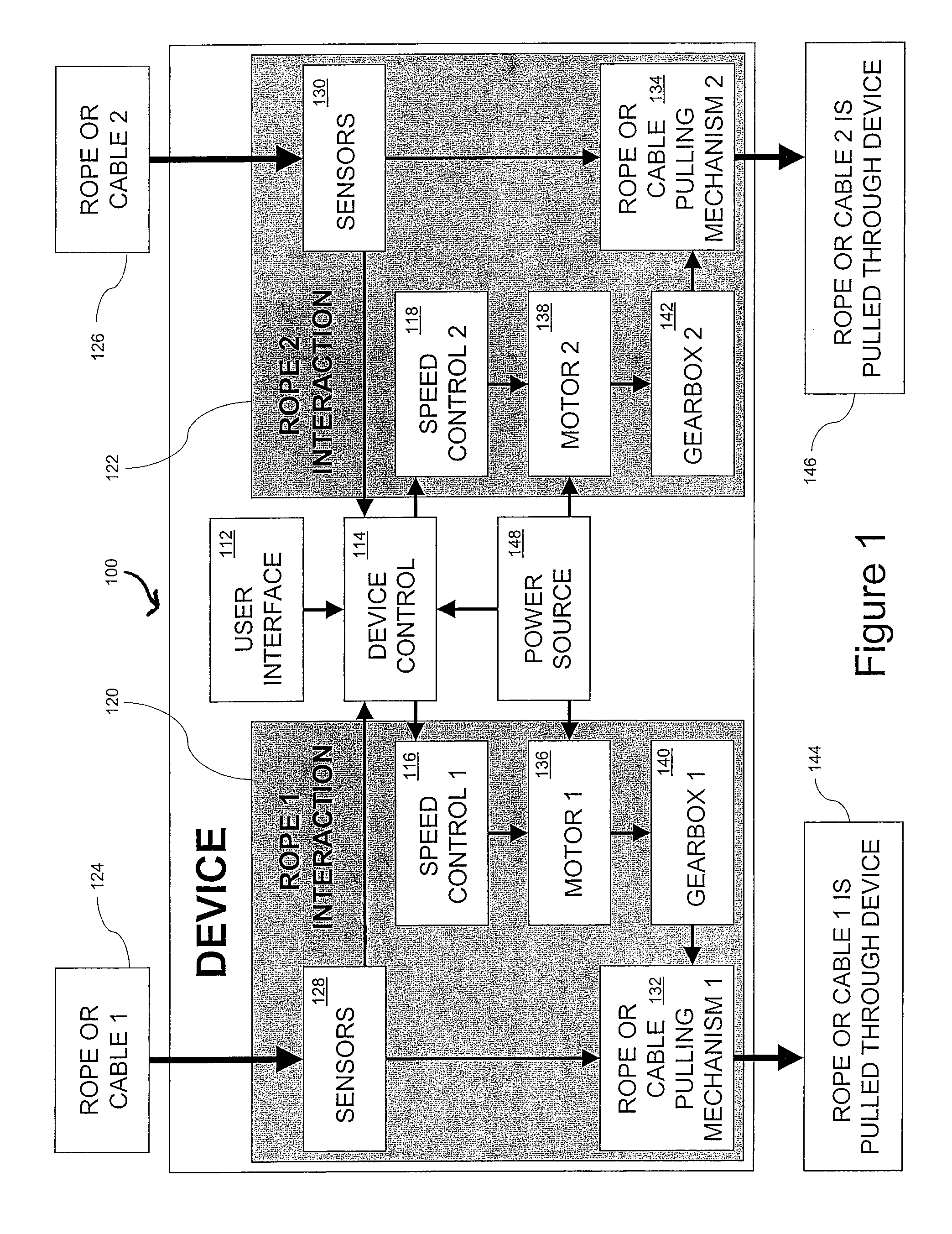Multiple line powered rope ascender and portable hoist
a technology of multi-line power and portable hoist, which is applied in the direction of hoisting equipment, load-engaging elements, transportation and packaging, etc., can solve the problems of limited access capability of existing methods for large vertical faces such as the sides of buildings or rock faces, and the limitations of standard rappelling equipment for window washing systems, cranes, scaffolding,
- Summary
- Abstract
- Description
- Claims
- Application Information
AI Technical Summary
Benefits of technology
Problems solved by technology
Method used
Image
Examples
Embodiment Construction
[0051]Referring now to FIGS. 1 and 2, a device 100 of the invention for positioning a load 110 in 2 dimensions is illustrated diagrammatically.
[0052]A user of device 100 provides an input to the device through the user interface 112 in accordance with the direction he wants to move the load, be it an object, another person, or himself. The device control 114 interprets the command and sends applicable signals to the speed controls 116, 118 in charge of each of the rope interaction mechanisms 120, 122. The signals are such that each of the mechanisms will create a velocity vector V1, V2 along its own rope 124, 126, which will sum with the velocity vector of the other rope or ropes to create the desired load trajectory. Sensors 128, 130 detecting the angle θ1, θ2 of the ropes with respect to vertical to provide position feedback to the device controller 114, which then updates the necessary speed of each rope feed 132, 134 to maintain the desired trajectory. The equation describing th...
PUM
 Login to View More
Login to View More Abstract
Description
Claims
Application Information
 Login to View More
Login to View More - R&D
- Intellectual Property
- Life Sciences
- Materials
- Tech Scout
- Unparalleled Data Quality
- Higher Quality Content
- 60% Fewer Hallucinations
Browse by: Latest US Patents, China's latest patents, Technical Efficacy Thesaurus, Application Domain, Technology Topic, Popular Technical Reports.
© 2025 PatSnap. All rights reserved.Legal|Privacy policy|Modern Slavery Act Transparency Statement|Sitemap|About US| Contact US: help@patsnap.com



